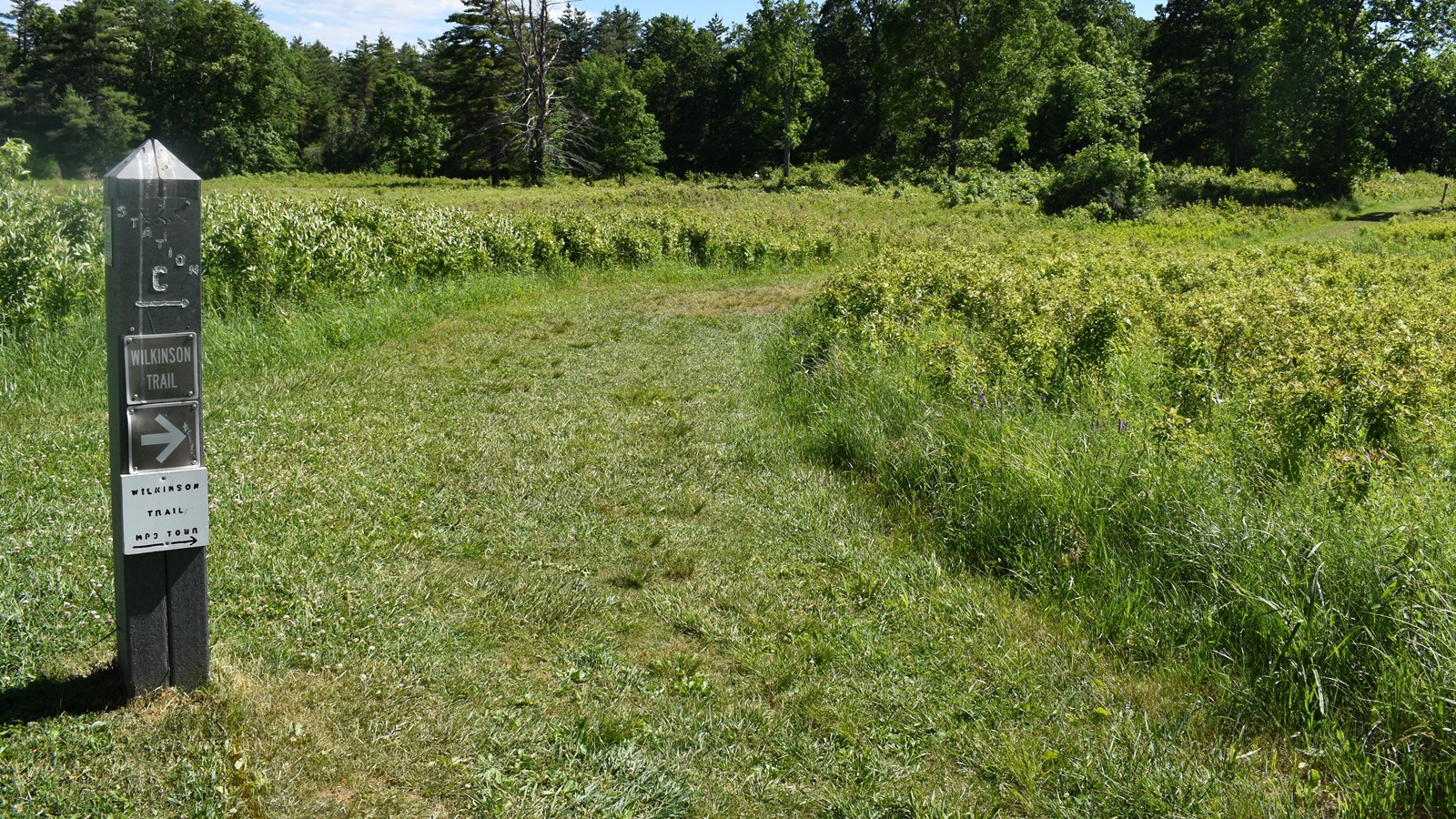Last updated: September 26, 2022
Place
Station C

NPS
REMINDER
At this fork in the trail, take the path to the right. It allows you to follow chronologically the historical events as they occurred here.
Troop movement and composition.
"On a march, in bad weather and bad roads, when the weary foot slips back at every step, and a curse is provoked by the enormous weight that retards him, it must be a very patient veteran, who has experienced much scarcity and hunger, that is not tempted to throw the whole contents of his haversack into the mire."
–British Ensign Thomas Anbury, 24th Regiment of Foot
From the time Burgoyne's army left Canada they faced a steady stream of hardships. Each soldier carried over 40 pounds of equipment, and added to this was the daily grind of extreme weather —including heat, cold, driving rain, humidity— and mosquitoes and black flies, and accompanying hunger, thirst and fatigue.
About one mile north of here, the British split into three columns, or three groups. One column followed the road along the Hudson River. A second kept about a mile west of the river. The third moved along one mile farther west from the river. This spacing was intended to help sweep around American positions the British were sure had to be somewhere near here.
You are now walking on the same trail used by the troops in the center column accompanied by Burgoyne himself. But just who were these forces we so commonly call "Redcoats?"
The British Regiments were famous on many European fields of battle, and here at Saratoga they consisted of men from England, Scotland, Wales, Germany and Ireland. Also with them were regiments of German auxiliaries –almost 3,000 officers and men– supplementing Burgoyne’s army.
In addition, they were joined by Native people, including about 150 Fort Hunter Mohawk warriors and their families, as well as dozens of Iroquois and Algonquin warriors from the Seven Nations of Canada. The rest of the forces included French Canadians and American Loyalists.
For this world-renowned fighting force, even the possibility of defeat at the hands of the contemptuous rebels was unthinkable.
Integrated forces were not purely a British military practice. The American army integrated African Americans, American Indians, and Caucasian soldiers in the same units. In fact, about five percent of the American troops here at Saratoga were black men, reflecting a policy of integration which didn’t happen again until the Korean War. They served as soldiers in both the Continental Army and militia forces alongside their white counterparts.
Enslaved men were sometimes forced to serve in the place of their owners. Many were not slaves at all, but free men who volunteered to serve. Although only white men were appointed as commissioned officers, all soldiers served and fought together and received the same rations, uniforms and pay. This marked a unique situation in a time of active slavery in this country.
Shhhh...is that musket fire in the distance? The British have arrived here on this very land. Keep hiking to find out what happened on that first day of battle...
